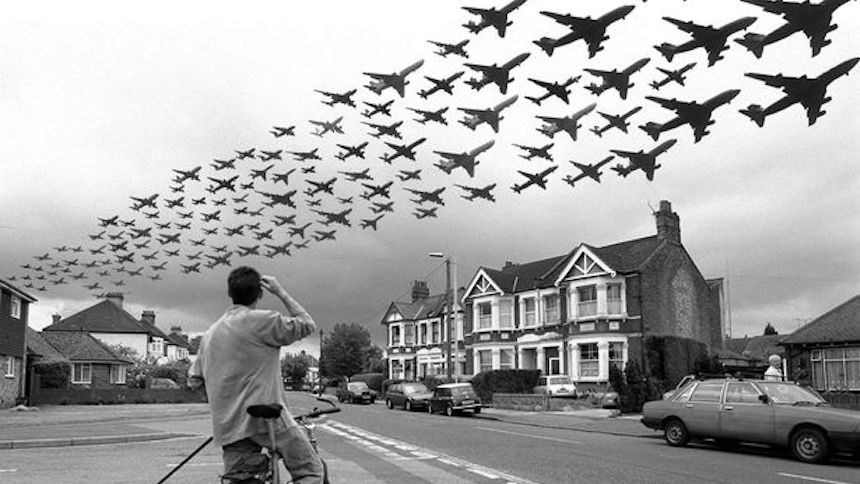 There have been a number of discussions, articles and blogs recently on what respite from aircraft noise would mean for the communities around Heathrow. Here we set out TAG’s view – our area is affected by four Noise Preferential Routes for departures when the wind comes from the east and last year we experienced trials of new concentrated flight paths, which emerging government policies link with respite.
There have been a number of discussions, articles and blogs recently on what respite from aircraft noise would mean for the communities around Heathrow. Here we set out TAG’s view – our area is affected by four Noise Preferential Routes for departures when the wind comes from the east and last year we experienced trials of new concentrated flight paths, which emerging government policies link with respite.
The case for respite
Respite has been a great benefit in the past to communities, that for historic reasons and over time, have been impacted enormously from living under under the shadow of Heathrow’s flight paths, and who have had to cope with extreme disturbance caused by aviation noise. In particular, this has applied to densely populated areas to the east of the airport across London who have found themselves under a continuous stream of arrivals when planes land into westerly winds. Under respite arrivals are directed to either the north or south runway at Heathrow for 8 hour periods at a time, thereby achieving a relative break for half a day at a time.
Historically, the Cranford Agreement has prevented respite applying to easterly departures, which overfly our area when the wind comes from that direction. As a result, the Twickenham, Teddington and Hampton area suffers 17 – 18 hours a day of more or less incessant departures when the airport is on easterly operations (around 35% of the time). For many years our area found this level of noise exposure tolerable, if not pleasant. The situation was considered acceptable by most people who came to live here, primarily as departures were dispersed across the NPRs and generally achieved as much height as possible quickly after takeoff. However, in recent years (especially around the time of the trials in 2014) significant changes have been introduced by the airport in association with the CAA, NATS and the airlines.
These changes have had the effect of altering the intensity of usage of NPR routes, causing concentration of flight paths, allowing more early morning and late evening flights, permitting increased use of larger and much louder aircraft (especially the A 380) and what appears to be deliberate low flying of these large aircraft. The areas around Heathrow appear to experience the lowest climb rates for departing planes from any major airport in the world. This is extraordinary considering the airport’s unique situation of being in the middle of densely populated residential areas.
Having regard to this, on the face of it, the introduction of respite to our area might be most welcome. However, respite in association with concentration is being used to as a fundamental component of the government’s case for expanding the numbers of planes over residential communities, rather than reducing the impact of aircraft noise. The CAA has acknowledged that over 29 million British citizens will be affected by future changes in the use of airspace they have planned – so in this context it is very important to have an understanding of respite, the new technologies enabling extreme concentration (such as PBN) and how they could be applied in future.
In fact the use of respite is fundamental to the Airports Commission’s case for expansion. Respite assumptions have been used in association with crude average noise metrics and assumptions about quieter planes to present a case that ostensibly relatively few additional people will be impacted by increased noise by airport expansion – despite the total number of flights being increased by almost 60%.
If expansion goes ahead, residents of Barnes and Richmond, etc. will need to get used to a new reality that under the Airport Commission’s proposals they will get about four hours respite a day, rather than the eight they enjoy at present. The case that relatively few people will be impacted with more noise if Heathrow is expanded is founded on the use of averages (reduced down by respite), out of date noise thresholds, and assumptions concerning quieter planes (that appear unjustified in the light of experience of the introduction of more A 380s).
What does this mean for those living around Heathrow and expansion?
At present, no one knows where future flight paths will be with a third runway (although the CAA, NATS and Heathrow Airport may well have some plans which have not been made public yet.)
Expansion looks particularly bad news for the people living north and east of the airport though. This is because the new runway would be built to the north – meaning areas such as Chiswick, Hammersmith, Ealing and Acton will be very affected by the new flight paths. Further, new areas to the north such as Harrow are highly likely to find themselves affected for the first time as the Cranford Agreement falls away and substantial numbers of departures potentially overfly over these areas in future.
Under the DfT’s proposed future airspace strategy respite is related directly to the the introduction of Performance Based Navigation (PBN), which using satellite navigation technology can be used to concentrate flight paths very accurately. If these technologies are used in this way it will create misery for the unlucky communities living under flight paths and will have the effect of creating noise ghettos. These issues have been raised with the Minister for Aviation as part of a wider group, the Aviation Communities Forum, which has a national coverage. The government is currently reviewing its aviation policies and is likely to go out to public consultation next year. However, the DfT seems very wedded to concentration with respite, which would be used as a key tool in plans to intensify aviation in the UK.
Reference has been made earlier to the use of metrics and how a ‘numbers game’ has been played to apparently show reduced numbers of people affected by aviation noise. How, mathematically, can one reduce the average number of people ‘significantly affected’ by noise? To the DfT the simple answer appears to be concentration with respite, making full use of PBN technology. However we consider that this is a crude divide and rule approach – it relies on keeping the majority happy (or metaphorically quiet) whilst hammering a minority who are unfortunate enough to live under one of the (yet to be designated) concentrated flight paths.
We consider this approach based on respite with concentration is inequitable and inappropriate in a democratic society. The metrics are very crude, being based on average thresholds (substantially higher than WHO guidelines) that haven’t been reviewed for more than 30 years. They also ignore the fact that significantly more people will be more significantly affected to a very great degree. In what other field of activity would government get away with targetting very significant numbers of people – albeit a minority of the total population – in such a manner.
We’ve experienced concentration already
People living in the Twickenham, Teddington and Hampton area already know what concentration is like after our experience of the 2014 trials which lead to our petition and the formation of Teddington Action Group. In these trials the MID (Midhurst) and SAM (Southampton) routes were merged and in fact 90% of flights on these NPRs passed down a corridor about 500m wide near the National Physical Laboratory in Teddington. Living conditions were quite impossible under these superhighways in the sky.
Why respite and concentration won’t work for London
Whilst it might be argued concentration can offer the most practical solution to the problem of aviation noise in sparsely populated areas (if very few people are impacted and those that are are provided with enough compensation) this will NOT work for densely populated areas like London. As part of the case to justify a third runway at Heathrow respite is being considered in association with a fishbone array of flight paths across London, so that a vast amount of people will have a significant and uninhabitable living nightmare – but not ‘only’ for 12 hours of the 16 hour ‘day period’ according to the Airports Commission .
It has been suggested concentrated flight paths could migrate across the sky in an effort to achieve respite so that the number of people falling under the ‘official threshold’ of 57 dB Laeq noise contour is apparently limited. However, this proposal has not been widely publicised and has not been tested or shown to work. The major problem given the number of air traffic movements planned is that it won’t be possible to achieve sufficient distance between flight paths or sufficient periods of respite to give anyone affected in large parts of London and the south east of England anything resembling an acceptable living environment. These areas are just too densely populated and in practice huge numbers will almost certainly be affected.
If (or when) the herringbone solution is shown to be unworkable then the only option left to the DfT and the aviation industry will be to really concentrate the paths, possibly nominally including fewer people in the government’s noise contours, but impacting on those affected much more significantly – with the result of making areas uninhabitable in practice for very many people.
This along with a whole host of other environmental considerations demonstrates that Heathrow is simply in the wrong place for an international airport. Expanding it would be a massive mistake of historic proportions, with devastating impacts on the lives of huge numbers of people.
TAG’s conclusions
Respite has been useful in helping certain areas, where for historic reasons conditions under flight paths have been allowed to build up up to unacceptable noise levels. However it should not be used as a key part of the case for intensifying the use of airspace or airport expansion.
Respite in association with concentration (using PBN technology) is a totally unacceptable basis for planning the use of airspace in densely populated areas in future. The use of these procedures will destroy family life, cause urban blight and create urban noise ghettos.

This is a very interesting and thought-provoking post. It challenges existing perceptions of better practice and the DFT’s obsession with (over) concentration – the means of packing more aircraft into an already overcrowded sky.
It highlights the injustice of concentrated flight paths and, in effect, the obscene prospect of creating winners by condemning others to ‘life without parole’ under a superhighway of noise and pollution.
Another really excellent posting. Please keep up the good work on our behalf. Am conducting my own complaints about the 17-18- hour days of noise when the wind is in the east, plus the increase in low-flying A380s right over the house. Heathrow won’t say what the minimum height over my house should be. And if I hear once more how much quieter A380s are than 747s …
This is a super post. Just a quick read and I totally agree that concentration offers more noise rather than less, even if the concentrated noise is moved slightly north or south for a few hours a day. I frequently tweet “Lift and Separate” as being the only fair way to share the problem. A distraught Kennington resident where arrivals whine over us the entire day long.